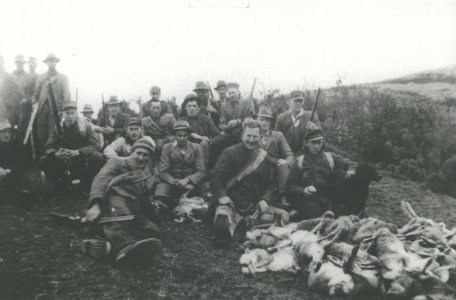OUR HISTORY
Farming
The greater Macraes area was first inhabited by European settlers in the 1850’s less than a decade after the first ships arrived in to Otago from the United Kingdom. Although archeological discoveries suggest that in ancient times the area may have included podocarp forests including Totaras, upon the arrival of the first Europeans the greater Macraes landscape was dominated by tussocks and a variety of rock formations.
The land was split and farmed in a variety of forms in the early days. Earliest reports describe Highlay Hill and and Stag Stations which were merged in 1864 to form Deepdell Station. Another early station was Coal Creek Station which was later renamed Shag Valley Station. Both Deepdell and Stag Valley were large pastoral runs. In the early years, in the absence of fences and few natural boundaries, shepherds or boundary riders were employed to ensure that stock were fed and kept within designated areas. With an increased number of settlers arriving in to the area, in the late 1870’s some of Deepdell Stations more productive land situated in the Moonlight Valley was surveyed into smaller sections of approximately 100 hectares, whilst other less productive areas were surveyed in to moderate size runs. At that time 100 hectares farms were regarded as economic. However, since the turn of the 20th century in order to remain economic, the 100 hectare blocks have been amalgamated and now the smallest farms in the area are at least 800ha in size.
Farming in the early days consisted of extensive development of any land that could be manually cultivated, with removal of tussock and establishment of pastures. To this day however vast areas of land within farms in the Macraes area are not fully developed due to the topography and prominence of rocky out crops, leaving mixed landscapes that still include native tussock species and species such as Matagauri. Unique to this greater area the plentifully available schist rock was extensively used in house construction, fencing and yard construction with some of these structures still evident today as you drive through the area.
The predominate farming class in the area is mixed sheep and beef. Historically some farms did also have a small number of dairy cows which in addition to servicing local requirements, produced products which were sent by rail to other areas. Despite its remote geographical location in the early settlement days there was a significant local population to service, because as the land was being explored it also revealed the area to be a rich source of a number of minerals, mostly importantly gold as described in other sections. This type of trade is captured in the local road name “Butter and Egg” which links the Moonlight and Nenthorn Roads and came from the road being used by Moonlight farmers supplying “Butter and Eggs” to the gold rush town of Nenthorn. Horses were also an important part of farming in the early days, involved in transport and cultivation, and as such most properties also grew feed such as oats for their horses and services such as Blacksmiths were an important part of the extended farming community.
Rabbiting was a sideline activity and as was the case in many areas elsewhere, revenue derived from rabbits often helped to finance land purchases. Rabbit carcases destined for the canning factory at Dunback regularly left Macraes on conveyances with racks designed for that purpose. When poisoning became the preferred method for keeping rabbit numbers in check, rabbit skins were a valuable supplementary source of income for those associated with the land.
Today there are several farming families that have been farming land in the Macraes area for over one hundred years, the longest residing being the Roy Family in Moonlight whom first settled in the area in 1883. Other hundred year plus families include the Harvie, Hay, O’Connell and Peddie families.
